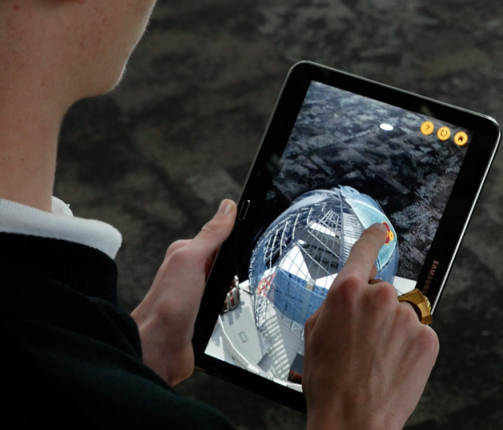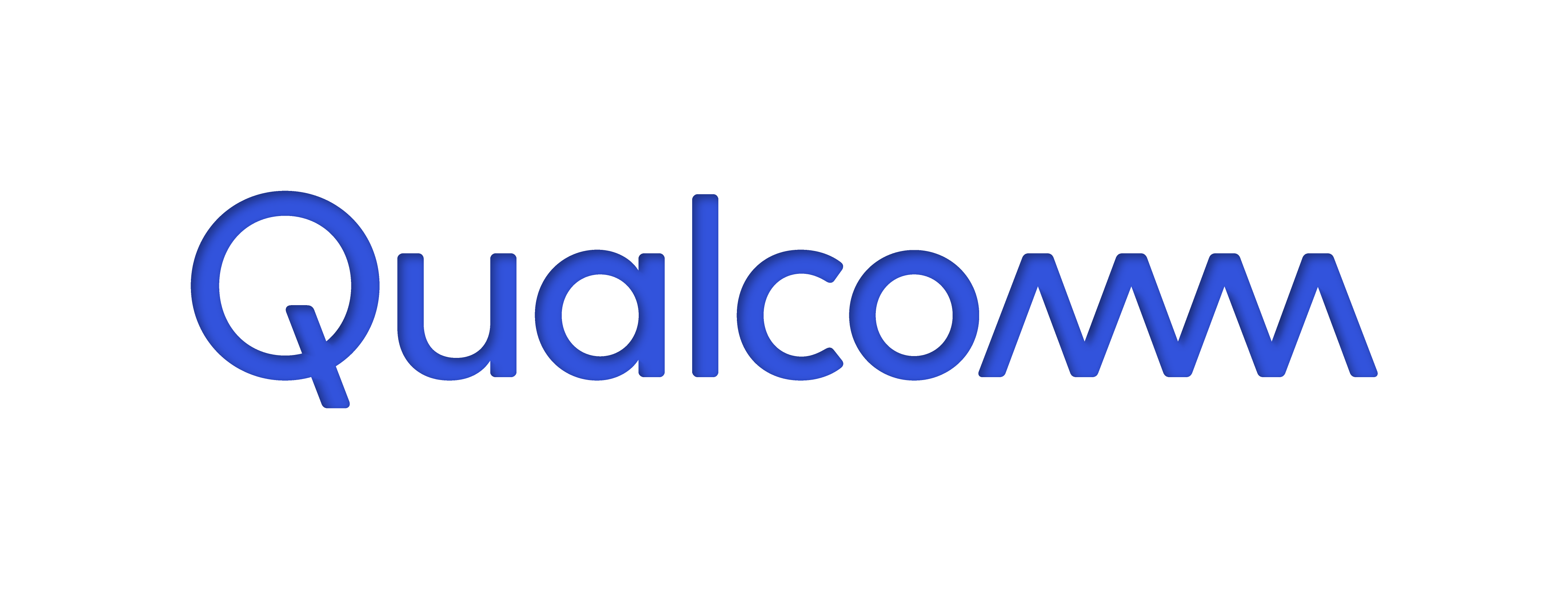STEAMing Ahead with Mobile Learning

Qualcomm® Wireless Reach™ and the San Diego Public Library Foundation collaborated on the STEAMing Ahead with Mobile Learning project to demonstrate how the integration of technology and extended learning through augmented reality (AR) helps to increase student engagement in learning and prepare students for future careers in the fields of science, technology, engineering, arts and mathematics. The project was implemented during the 2015-16 school year with 9th grade students at e3 Civic High, a charter high school that is housed on two floors of the The Central Library @ Joan Irwin Jacobs Common (Central Library) in downtown San Diego.
Challenge
- High wage jobs in high demand sectors in the San Diego region demand that today’s students develop familiarity with a new set of career ready skills, including those most often associated with the use of science, technology, engineering, arts and mathematics, also known as STEAM.1
- However, only one-quarter of high school students in the United States say that they are very interested in a career field that leverages science, technology, engineering or math concepts.2
- Students report that to develop a stronger interest in STEAM careers they need to see these careers in action, and to understand the relationship between the academic subjects they are studying in school and how STEAM resources impacts the world around them.3
- It is often difficult within a school curriculum to provide students with meaningful learning experiences that can connect academic knowledge with career preparation.
Solution
- To bridge the gap between academic content and real world learning experiences, this project leveraged a unique element of the Central Library structure to engage students in learning about the impact of STEAM on the world around them. Core to this learning experience was the 113 feet high steel lattice dome that graces the top of the Central Library structure.
- Using Qualcomm technology, the project focused on leveraging AR content that utilized mobile, context-aware 4G technologies to allow the students to interact with digital information embedded within the library’s physical environment. Similar to AR used by construction teams to visualize a building prior to construction, students learned about the construction of the library dome while learning the STEAM concepts associated with each structural element.
- To access the AR content, the 9th graders positioned their 4G tablets over an AR trigger, at this point the AR reveals a 3D scale representation of the dome on their tablet screen to display information about the library and dome construction in six different academic areas: humanities, science, technology, engineering, art or mathematics.
- Within each academic content area, the students could read narrative text, watch a video or review photographs, diagrams or charts. Each section also included a quiz to assess student comprehension about that academic content area. Upon successful completion of all six areas the students were rewarded with the ability to take a photo next to the augmented 3D image of the Central Library dome displayed on their tablet screen.
Impact
Project Tomorrow®, a national education nonprofit, conducted the external evaluation on the STEAMing Ahead with Mobile Learning project. Key findings from the project evaluation include:
- The context-rich learning experience of using the 4G tablet to access the AR content increased student engagement in learning about their urban environment, and the unique structural aspects of the Central Library dome.
- Students ascribed many benefits to the learning experience including increased enjoyment in learning, ability to work on the content with their classmates in a collaborative manner, and being more interested in the dome structure and architecture than they first envisioned. For many of the students this was a first experience in understanding what is meant by structural engineering. The students were especially intrigued by how the architects and engineers used problem solving strategies to build the dome to withstand high winds in downtown San Diego.
- Because of this learning experience that married digital resources with real world context, 40 percent of the 9th grade students said they were more interested in exploring a STEAM career field. This finding opens the door for further leveraging mobile solutions for career exploration by students.
- Both the students and their teachers would like to see how mobile AR environments such as the one demonstrated in the STEAMing Ahead with Mobile Learning project could be used to impact student engagement, learning and career preparation in other curriculum areas as well.
Program Stakeholder Roles
- San Diego Public Library serves the informational, educational and recreational interests of San Diego through its multiple assets. The Central Library dome located at the top of the facility in downtown San Diego provided the context for the AR learning experience.
- San Diego Public Library Foundation supports excellence in the San Diego Public Library system through philanthropy, advocacy and outreach and was the managing partner for this project.
- e3 Civic High, a charter high school in downtown San Diego, served as the host site for the implementation of the project with their 9th grade students and teachers. They developed the content that was integrated in the AR app.
- Project Tomorrow, an independent, third party research organization, designed and completed the evaluation study and provided guidance on project outcomes.
- Trigger, a digital agency, designed and developed the AR app experience with help from e3 Civic High and the San Diego Public Library.
- Qualcomm Wireless Reach provided funding as well as project management support.
1 http://www.sandiegobusiness.org/about
2,3 Project Tomorrow Speak Up 2014 National Results; www.tomorrow.org

